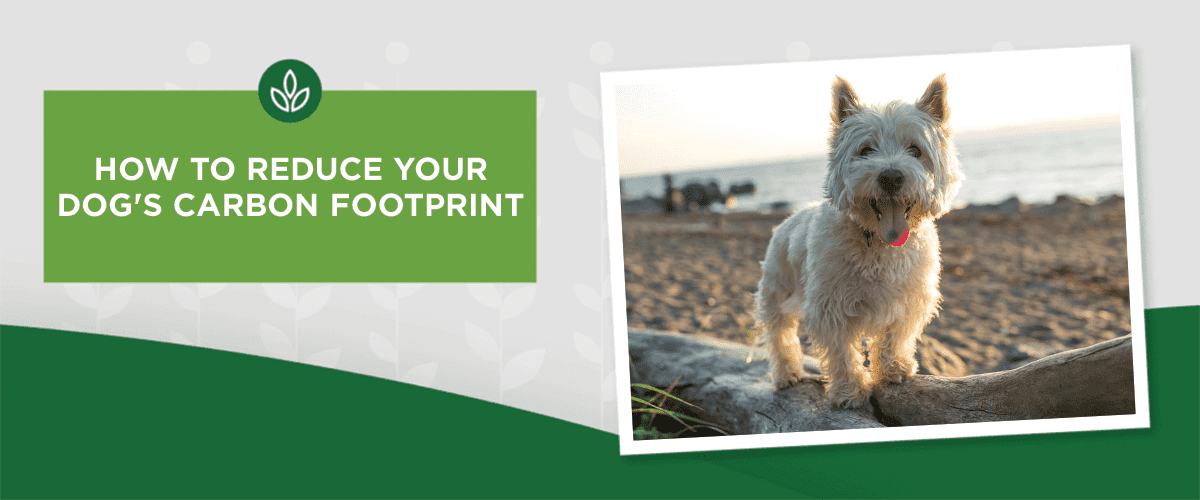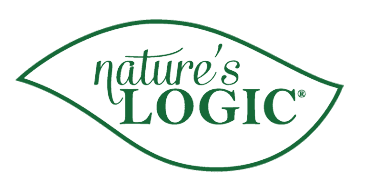How to Reduce Your Dog’s Carbon Footprint
Reducing your dog’s carbon footprint (or pawprint) involves making mindful choices in their diet, lifestyle, and overall care. Food is one of the key considerations where your choices can have an important impact on the environment. Additionally, the products you purchase and utilize for their everyday care, from gear to grooming, all add up and can make a difference.
Below, we’ll explore tips to help minimize your pup’s carbon footprint.
How to Assess Your Current Carbon Footprint
To best identify how to lower your pet’s carbon footprint, you’ll need to understand your current impact. Assessing your pet’s current carbon footprint involves looking at various aspects of your lifestyle and pet care routine. Here’s some good places to start:
- Nutrition Choices: Evaluate your dog’s diet, considering the environmental impact of the brand you’re choosing to feed and how they produce their products. Additionally, you’ll want to look for brands who utilize ingredients and proteins that are locally or sustainably sourced and minimally processed.
- Pet Products and Toys: Assess the sustainability of products and toys you purchase for your dog. Look for items made from eco-friendly materials and choose well made, durable options that reduce the need for frequent replacements.
- Waste Management: Evaluate your waste disposal practices, especially concerning pet waste. Consider using biodegradable waste bags to minimize your pup’s environmental impact. Additionally, consider composting pet waste in designated compost bins if feasible.
- Grooming Products: Examine the environmental impact of grooming products. Look for pet shampoos, conditioners, and other grooming items that are cruelty-free, biodegradable, and free from harmful chemicals.
- Energy Consumption: Assess the energy sources used in your home and their impact on the environment. Consider energy-efficient practices, and if possible, choose renewable energy sources. This extends to the production of the pet food you choose to feed as well, as seen in Nature’s Logic’s commitment to producing their kibble with 100% renewable electricity.
- Product Packaging: Pay attention to the packaging of your pet’s products. You may look to support brands that use recyclable materials and those who participate in initiatives like Certified Plastic Neutral packaging. After consumption of your pup’s food, properly dispose of packaging through recycling programs.
- Educational Resources: Stay informed about sustainable practices in pet care. Utilize resources provided by reputable organizations, like the Pet Sustainability Coalition, and be open to making informed changes based on evolving knowledge.
Making Changes toward Sustainability
Conscientious pet owners increasingly seek sustainable choices for their canine companions. While exploring the landscape of low-impact pet products and food options, there are a lot of things to consider. Remember to focus on practical considerations and review the brand’s products and sustainability practices.
Sustainable Dog Food and Product Considerations
- Clean Energy Sourcing: Consider companies that embrace clean energy practices in their manufacturing processes. Nature’s Logic, for instance, uses 100% renewable electricity for their kibble production. This simple yet impactful choice contributes to a reduction in the overall carbon footprint associated with pet food manufacturing.
- GMO-Free Assurance: Environmental responsibility extends to ingredients as well. Seek pet food brands that are transparent about utilizing GMO-free ingredients, like our use of GMO-free millet.
- Prioritizing Natural Ingredients: When selecting pet food, prioritize products crafted from wholesome, natural ingredients. Look for formulations without synthetic vitamins or minerals, opting for recipes that reflect a commitment to your pet’s health without unnecessary additives.
- Plastic Neutrality and Recycling Initiatives: Research companies that are working to address plastic pollution and waste reduction. Look for brands that take tangible steps, such as utilizing Certified Plastic Neutral packaging and incorporating recycled materials into their product packaging.
- Recyclable Packaging Options: Choose pet products with packaging that is easily recyclable. From treat pouches to litter bags and cans, look to support brands that encourage responsible waste disposal by providing clear recycling instructions on their products.
- Alignment with Sustainable Development Goals: Explore companies that are accountable and work towards positive scores on global sustainability goals, such as the United Nations Sustainable Development Goals (SDGs).
- Industry Accreditations: Companies that receive accreditations from sustainability-focused organizations, such as the Pet Sustainability Coalition, signify a commitment to responsible practices. Consider brands that have earned recognition for their efforts, as it indicates a more comprehensive approach to sustainable business practices.
As a pet owner, you can make a meaningful impact by prioritizing simplicity, transparency, and practical choices when selecting pet products.
Sustainable Takeaways
By supporting brands and initiatives that work to promote a sustainable future for ourselves and our pets, you can make a big impact. Small yet intentional changes you make collectively contribute to a eco-friendlier and more sustainable lifestyle for both you and your pup. Consider these environmentally conscious choices for your dog’s lifestyle to contribute to reducing their carbon pawprint for the betterment of the planet.






